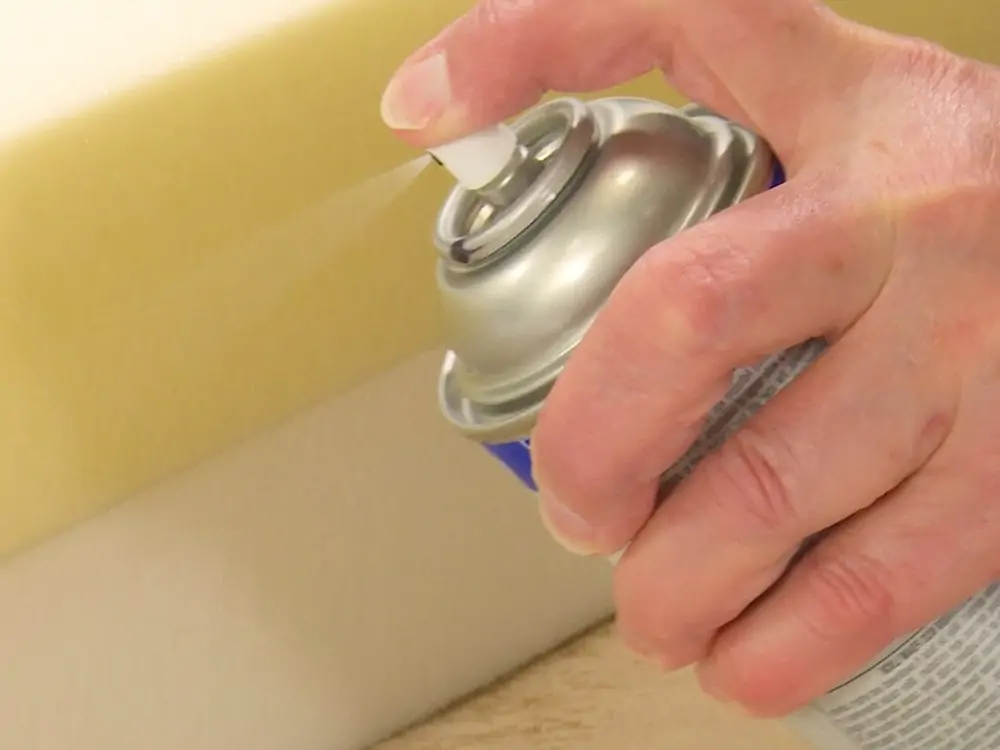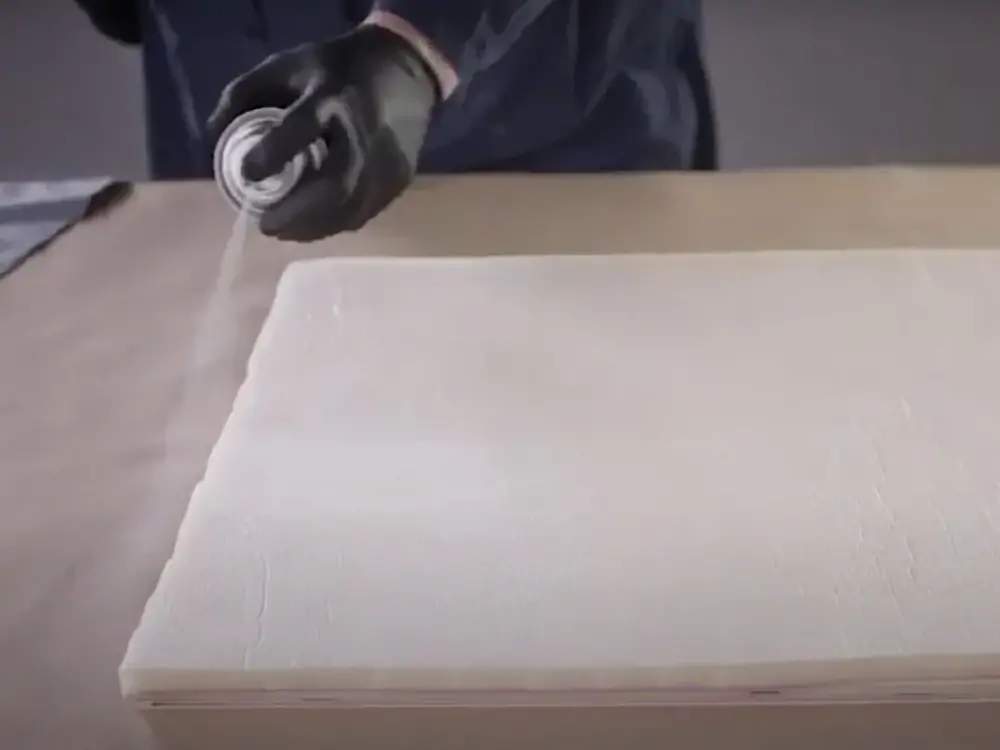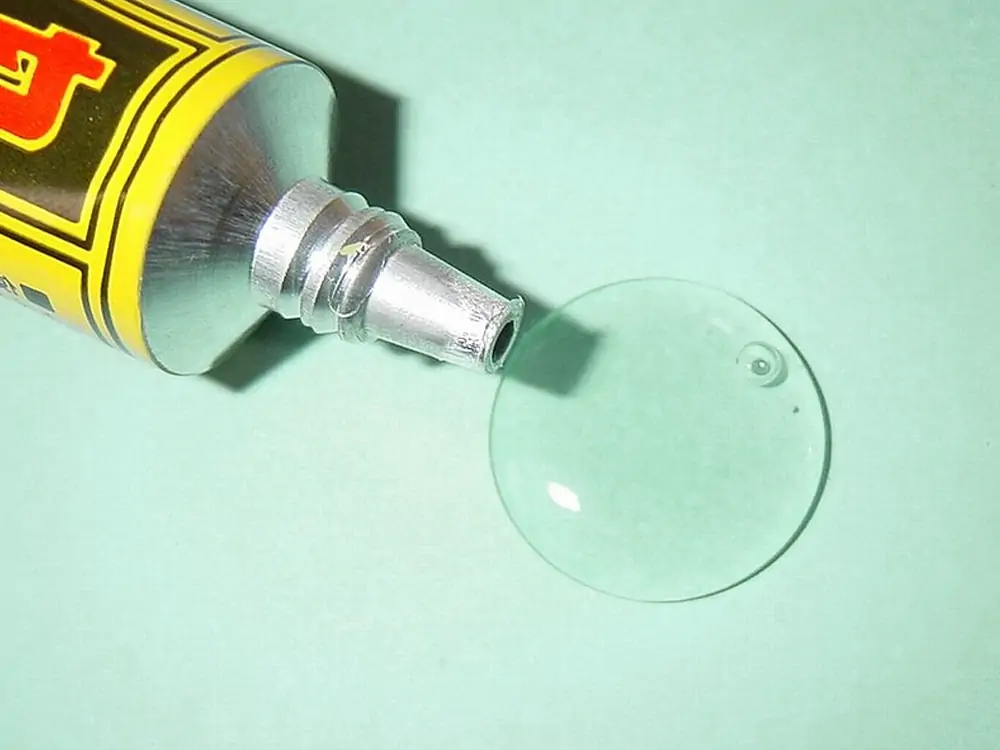All foams are not created equal, neither are all adhesives. When working with memory foam, choosing the right adhesive is paramount. Just because a particular adhesive is strong enough does not mean it is a good adhesive for memory foam.
Whether you are assembling, repairing, or manufacturing something with memory foam, keep reading. In this post, we will shed light on all aspects of this topic, and help you choose the right memory foam adhesive for your project.

Do you need adhesive for memory foam mattresses?
When working with memory foam, you may or may not need adhesive, depending on the situation. If you are repairing or assembling a memory foam mattress, you need some type of glue, particularly spray adhesive. In addition, you have to know how to glue foam to foam. First, let’s take a look at some use-case scenarios:
Assembling a memory foam mattress
Usually, there are several layers of foam in a memory foam mattress. Each of those layers serves a distinct purpose. That can be providing support, comfort, and temperature regulation. In addition to memory foam, those layers may include latex foam or other types of foam.
When it comes to gluing memory foam together, choosing the right memory foam glue is the key to your project’s success. That’s because spray adhesive allows consistent and even application. Spray adhesive provides a strong bond between two foam pieces. And this bond does not reduce the comfort and flexibility the foam provides.
Your project may require assembling some parts of a memory foam or manufacturing the whole mattress. In either case, you will find things a lot easier if you use Sprayidea 32 or a similar foam adhesive glue.
Repairing a memory foam mattress
Even if your memory foam mattress is of very high quality, eventually it will undergo wear and tear. If there are holes, tears, or damages in your memory foam mattress, it will cause discomfort, and the mattress will not last long.
In such a case, you can repair the mattress, preferably with spray adhesive. The damaged areas can be effectively sealed with spray adhesive, without replacing the entire mattress.
Securing additional memory foam mattress components
Comfort layers, mattress toppers, or similar components enhance memory foam mattresses. You must securely attach these components to prevent shift. Spray adhesive can be very convenient for such a project.
For the Performance or feel of the mattress, spray adhesives are preferable to fasteners or straps. That is because the application of spray adhesive does not require any additional tools.

What type of adhesive should you use with memory foam?
If you are wondering what glue works on foam, here’s what you need to know. Depending on the nature of your project, you may want a spray adhesive, liquid adhesive, or hot melt adhesive.
Liquid adhesives are water-based. They serve almost the same purpose but are not very easy to apply. And yes, they also take longer to dry. While some professionals prefer using liquid adhesive with memory foam, this adhesive may not be a good option for a DIY enthusiast. That is because ease of application is important for a non-professional.
And then there are hot melt adhesives used in projects with quick cutting times. They are mostly used in factories where the production processes are automated.
Then comes spray adhesives. If you want to bond relatively large pieces of memory foam, spray adhesive is ideal for your project. That’s because spray adhesive is easy to apply on large surfaces, is durable, and leaves no residue. The best spray adhesive for foam depends on the type of your project.
Factors that affect the efficiency of adhesives
The strength of any glue depends on factors such as the formulation of the glue, the way you prepare the surface, and the environment. Let’s dive a little bit deeper into these factors:
Adhesive type
Adhesives vary a lot in terms of their chemical compositions. Properties such as polyurethanes and cyanoacrylates determine the strength of adhesives.
Preparation of the surface
Bond strength largely depends on the roughness and cleanliness of the surface. Moisture, dust, oil, and other contaminants can weaken the bond. A slightly rough surface results in an enhanced interlocking.
Compatibility
The bond strength also depends on the material you are bonding together. Adhesive formulated for plastic, metal, or wood may not work well with memory foam. The efficiency of adhesives comes down to their chemical compositions.
Curing time
Humidity and ambient temperature also play a role here. If it does not cure properly, the bonds may be weak.
Application
Many DIY enthusiasts ignore the fact that when it comes to gluing polyurethane foam, the efficiency and precision to some extent depend on the way you apply the adhesive. You must spray it evenly with the right amount of pressure.
Things to consider when choosing an adhesive for memory foam
When choosing the right adhesive for memory foam, have a clear idea of what you are working with. Memory foam consists of polyurethane and some additional chemicals that serve as bulking agents. Using the right adhesive is paramount for gluing foam together.
Due to the nature of the foam, it must be treated with care. When buying an adhesive, ensure it is compatible, easy to use, non-toxic, and strong. It should also dry quickly. These may sound common sense, but they are not.
Some adhesives can ruin memory foam. If you happen to apply any foam you get your hands on, you may end up making the foam stiff. If you are making a mattress with memory foam, you will spend a lot of time in contact with the foam mattress, so it must be non-toxic, too.
Also, some adhesives lack the strength to hold memory foam together. Avoid such a product at all costs when deciding on what adhesive to use for foam.

Apply your adhesive correctly
This advice is not for professionals who live and breathe various types of foams and glues. The following guide is a loose set of instructions for DIY enthusiasts and novices wondering how to glue polyurethane foam together. Also, please note that this guide assumes you are using spray adhesive.
Step 1: Prepare
Before you dive into action, cut the foam and prepare the designated area. If the foam pieces are already cut, you still need to order them. To prevent the surface from excess glue, you can put drop cloths or newspaper between the surface and the foam.
Step 2: Arrange the memory foam
When stacking the pieces, make sure that the sides that need to be glued are facing you. Position them in a way that you can spray both sides of the pieces at the same time.
Step 3: Spray the glue
Spray the adhesive generously without saturating the foam. Wait about 15 seconds while the adhesive gets tacky.
Step 4: Attach the pieces
Align and position the pieces correctly. Then evenly apply firm pressure to make sure the bond is even.
Step 5: Let it dry
The adhesive can fully cure in about 15 minutes, so let it sit for that duration.
After that, you can let the foam back in the cover. And that’s it! The cushions are now ready.
Tips for avoiding foam bonding issues
To work successfully on your project, you have to know how to glue foam together. And when applying spray adhesive to memory foam, you must pay attention to detail. Apart from that, there are some techniques that you want to keep in mind.
- Prepare the surface properly: Make sure the surface is clean and free from dirt, dust, and oils. For a proper bond, following this step is of utmost importance.
- Apply the adhesive evenly: It is important to apply the adhesive evenly across the area to be bonded. The strength of the bond largely depends on it.
- Consider humidity and temperature: When it comes to gluing foam together, consider the humidity and temperature of the place. Spray adhesives come with specific instructions regarding the ideal temperature and humidity.
- Follow the recommendation and instructions of the manufacturer: All adhesives are not created equal. There should be specific instructions and recommendations for the type of adhesive you are using. Carefully read them and follow them during the application.
- Run a test application: Before you apply the memory foam glue in the real project, try testing it on a small piece of foam. This way, you will know whether the glue will work well with the foam.
Conclusion
It is important to be careful when choosing an adhesive for repairing or assembling a memory foam mattress. What is the best glue to use on foam? In most cases, it should be a spray adhesive. Choose one that can help you get the job done without compromising the flexibility and comfort of memory foam.
Also, the way you apply the adhesive determines the success of your project. Consider the application techniques, environmental factors, and of course, surface preparation. Whether you are repairing and assembling a memory foam mattress, ensure a smooth and clean surface.
We have shed light on everything you need to know about choosing the best glue for memory foam. And we believe now you are better prepared for your project. It all comes down to understanding how adhesives interact with memory foam and choosing the right adhesive.
